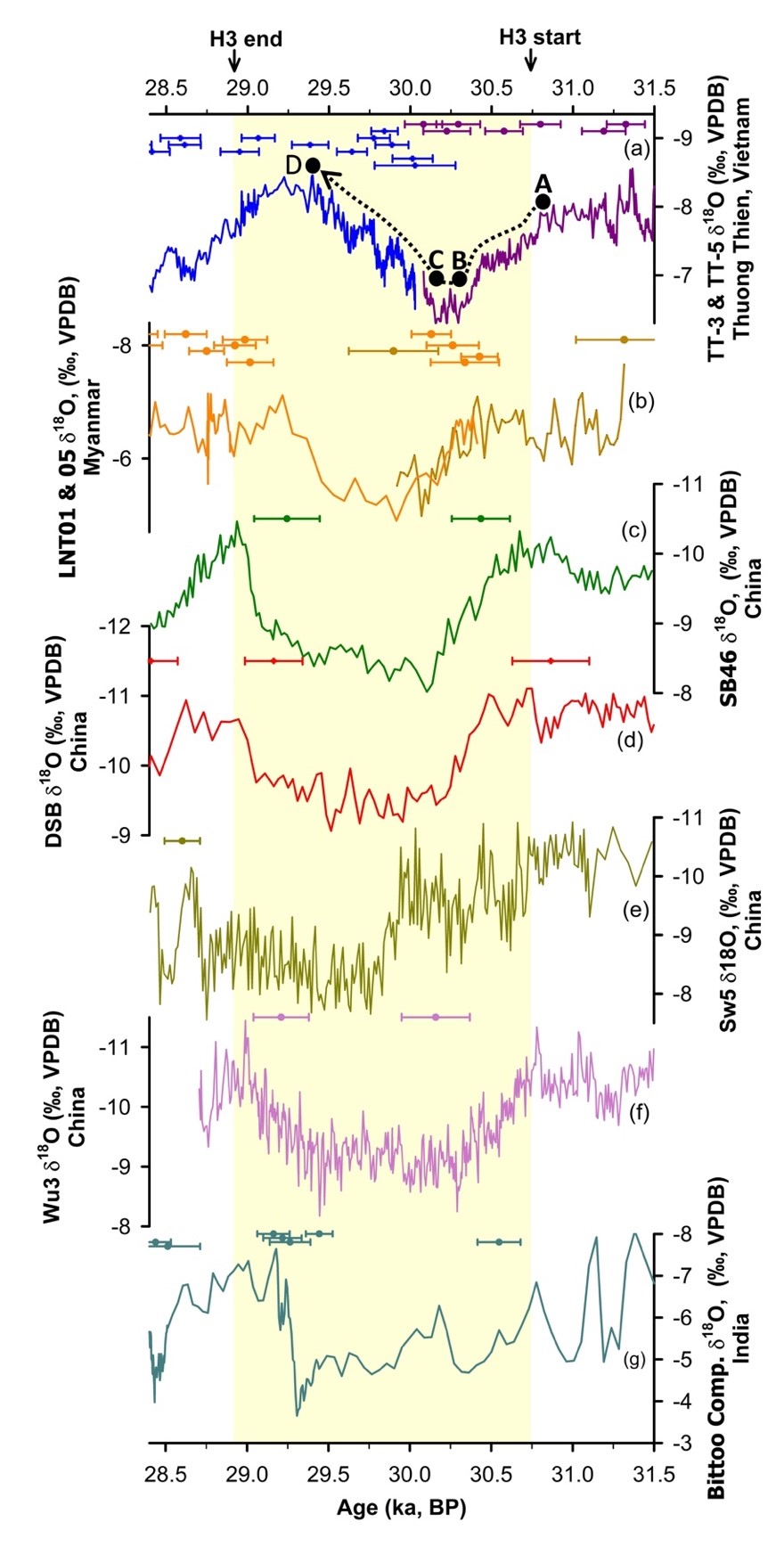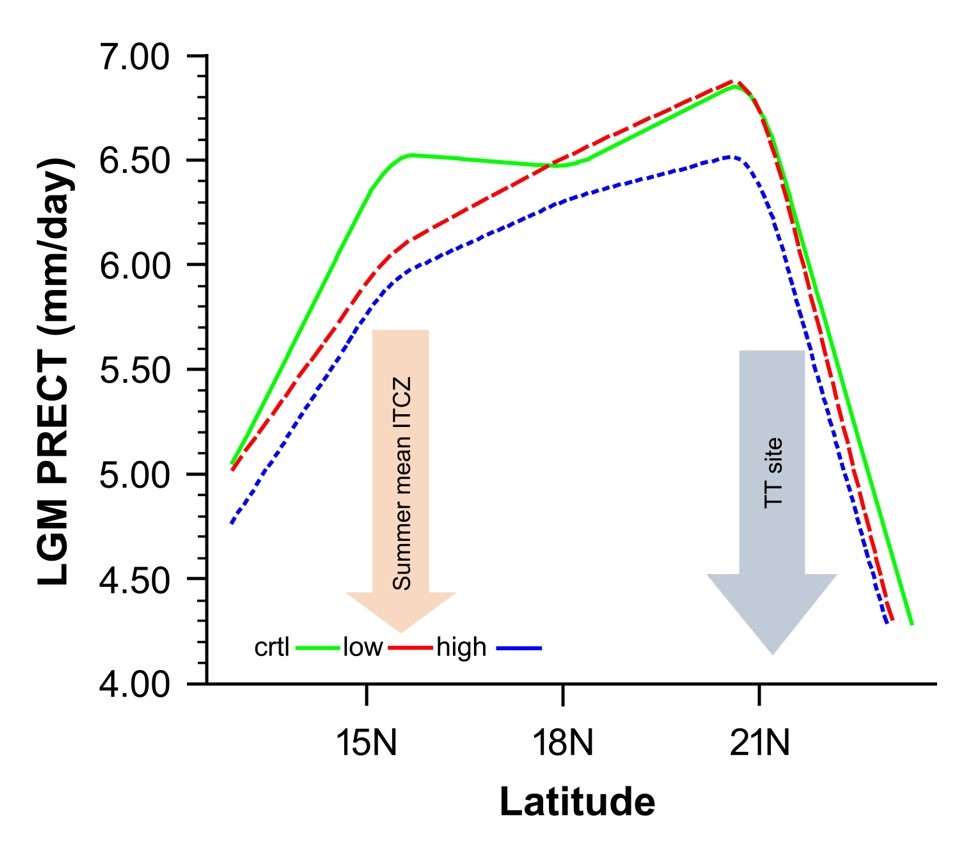


Fig. 1 Comparisons of the speleothem δ18O records. (a) Thuong Thien Cave in Vietnam (this study); (b) LNT Cave in Myanmar (Liu et al., 2020); (c) Sanbao Cave in China (Zhao et al., 2011); (d) Dashibao Cave in China (Zhao et al., 2011); (e) Tian’e Cave in China (Liu et al., 2018); (f) Wulu Cave in China (Duan et al., 2014); (g) Bittoo Cave in India (Kathayat et al., 2016). The yellow bar indicates Heinrich Event-3 with initiation and termination time. The 230Th ages are also plotted with 2σ error bars.
The Heinrich Event (HE), a millennial-scale cold event in the North Atlantic, is characterized by the occurrence of a large amount of coarse terrigenous grains in marine sediments. There are 7 HEs in the past 70 thousand years (HE-6 to HE-0). It will influence the global climate through the thermohaline circulation. Numerous climate proxy records have been reported from tropical Asia that register HE coeval events. Some researchers proposed that, in addition to ocean circulations, atmospheric interactions may also contribute to the climatic variability during these events.
Among HEs, HE-3 and HE-6 have been categorized as unusual due to lower proportions of lithic grains found in their corresponding sedimentary layers. An alternative driving mechanism of the iceberg melting process has been proposed to explain why the two events are weaker than others. In tropical Asia, HE-3 manifestations prominently appear in proxy records from China, Myanmar, northern Borneo, and India. It supports the climatic link between the low latitudes and the North Atlantic. However, the mechanism remains challenging because monsoon intensity may respond to HEs in different magnitudes and the actual environmental changes during HEs can be further complicated in proxy records due to their varying resolution. It highlights the need for a detailed understanding on HE and regional climate responses.
Here, we report a new dataset of speleothem δ18O from northwestern Vietnam, which covers the duration of the HE-3 with decadal scale resolution. The δ18O data implied a pronounced excursion in precipitation beginning at around 30.8 thousands years ago (ka), reaching the minimum at 30.3 ka, and then an increase in precipitation at 30.2 ka while returning to a higher level at 29.5 ka. It shows a gradual, discontinuous onset and termination of altered conditions with steps inferred to be on the order of several hundred years. This contrasts to the abrupt HE-3 onset and termination observed by previous studies in Asian monsoon region.
We used a coupled slab ocean model (CAM3) to evaluate effects of different degrees of cooling associated with glacial boundary conditions. The model implemented Heinrich-like cooling by adding a uniform flux term applied to the ocean mix layer of the North Atlantic north of 30°N. Magnitudes of cooling ranged from 6 °C and 10 °C (low and high scenarios respectively) around the British Isles relative to the control simulation. The simulated summer (June-July-August) precipitation near northwestern Vietnam presents an ~10% decline which resulted from a southward shift of Indian Ocean’s warm pool and summer ITCZ by the cooling in the North Atlantic.
Key points
More information

Fig. 2 Simulated summer precipitation rate (mm/day) by CAM3 across the Indo-China Peninsula (90–110° E). An ~10% reduction is derived for a mild (dashed red line) and an extensive cooling (fine dashed blue line) in the North Atlantic relative to the control simulation (solid green line).